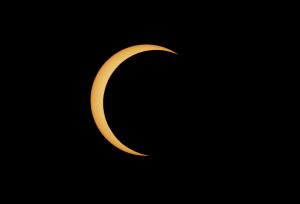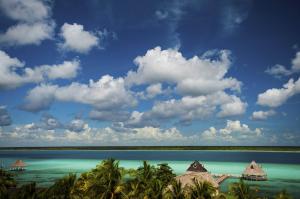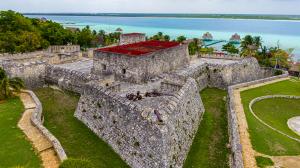This is how the annual eclipse was witnessed in southern Quintana Roo
The phenomenon, which had not happened since 1991, allowed astronomy lovers, nature enthusiasts, tourists, and locals to experience an impressive spectacle in which the moon covered the sun almost completely, forming a "ring of fire."
During the experience, which lasted almost four hours and was 90% visible, the public enjoyed an impeccable astronomical event and two destinations of Mayan culture and ancestry, such as Chetumal and Bacalar. The lagoon of the Seven Colors in Bacalar, an oasis of contrasting hues where you can safely enjoy activities of low environmental impact and where it is possible to visit three spectacular cenotes (Cocalitos, Negro, and Esmeralda), was also the scene of the magical event.
Likewise, the Fort of San Felipe, the place that shelters more than 270 years of incredible stories about the Spanish conquistadors, the Mayan peoples, and their innumerable battles, and Yook'ol Kaab, Chetumal's planetarium, also received hundreds of spectators.
The natural beauty of these two towns added charm to the eclipse experience. The lush tropical vegetation surrounding Chetumal and the varied landscapes of Bacalar provided a spectacular backdrop for the event and the different activities that took place simultaneously with the observation.
Now, tourists and locals are preparing to receive the total solar eclipse on April 8, 2024, when the moon will completely cover the sun this time.
Jennifer Mendoza
LLYC
+57 319 4933083
email us here
Visit us on social media:
Facebook
Twitter
Instagram
YouTube
TikTok
Legal Disclaimer:
EIN Presswire provides this news content "as is" without warranty of any kind. We do not accept any responsibility or liability for the accuracy, content, images, videos, licenses, completeness, legality, or reliability of the information contained in this article. If you have any complaints or copyright issues related to this article, kindly contact the author above.



